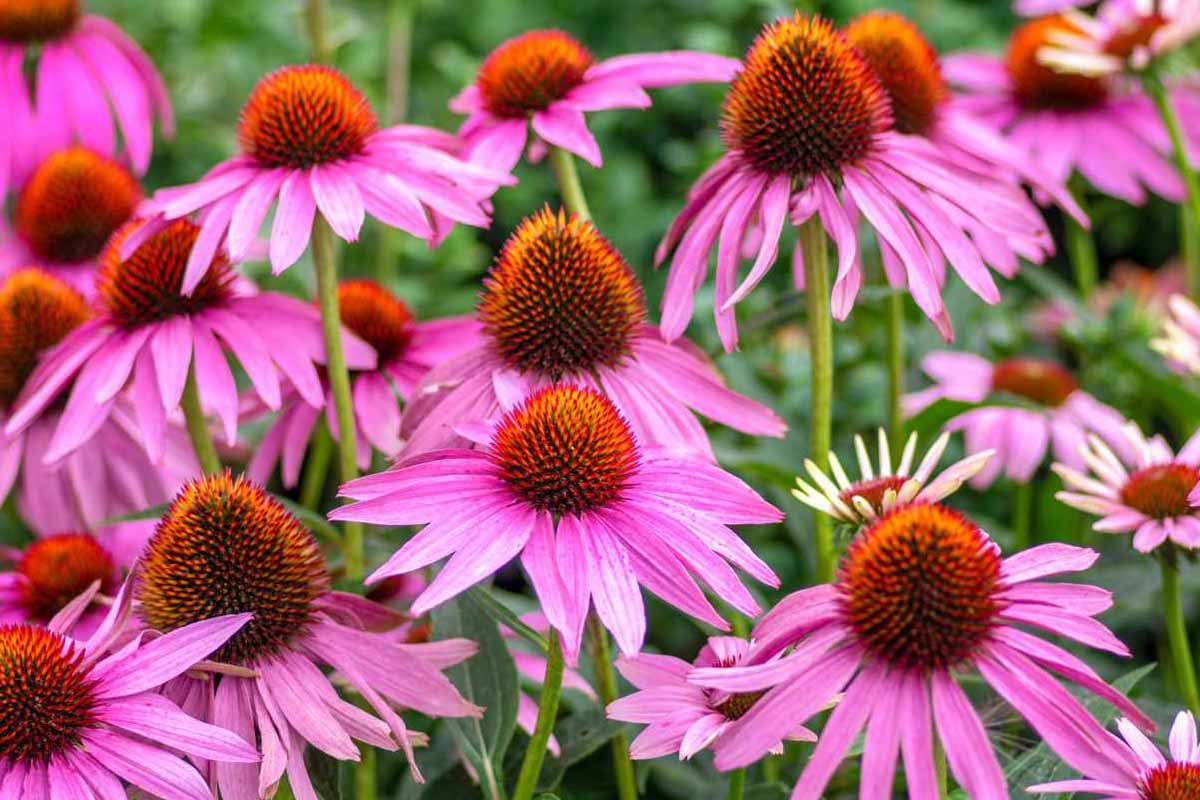Cool air, warm soil, and soft light create the perfect window to transform your beds. Plant perennials now and your garden gains sturdy roots while growth above ground rests. Fall moisture helps without waterlogging, so new plantings settle fast and stay resilient. Choose varieties with long bloom, tidy form, and easy care to balance color and structure. With simple spacing, quick mulch, and timely cuts, borders look polished this season. Later, they surge with reliable flowers as days brighten.
Catmint : a low-care star among perennials
Catmint stays generous, because it blooms for a long stretch and shrugs off stress. Grey-green foliage forms gentle mounds; the spires bear small violet blooms visible from distant vantage points, while proximately they appear refined. Position in complete sunlight and adequately draining substrate, since roots reject waterlogged zones, although heavy soil functions when drainage proves sufficient.
Water three times per week while plants establish, then ease off as they root. Keep soil evenly moist, not wet. After flowering, cut back to the crown so fresh growth pushes and a second wave of bloom follows. Use larger kinds to fill space, and shorter ones to edge paths.
Daylily : tough color you can plant and split now
Daylily brings easy joy, because the clumps handle heat, city soil, and busy weeks. Flowers come in many colors, so borders stay lively as buds open in sequence. Plant now for spring show, and, while you are at it, split old clumps so each fan gets room to bulk up through winter. They settle like bulbs do, so the cold sets roots and spring brings a rush of stalks.
In mixed beds of shrubs and perennials, daylilies thread between woody branches and keep the scene soft. Add compost for better drainage, water after planting, then top with mulch so soil holds moisture and stays even.
Coreopsis : bright yellow with easy care and deer notes
Coreopsis pops with clean yellow in late spring, so beds get that sunny hit without fuss. Give it full sun and well-draining soil; sandy or loamy soil is ideal, while clay works if you loosen it and mix in organic matter. Water three times per week while plants establish, then cut back to a normal schedule. Deer tend to avoid it, although not as much as some plants.
Threadleaf types resist nibbling more, while lance forms sit slightly lower on the deer-proof scale. You do not need to deadhead to keep flowers coming; simply tidy spent stalks by cutting to the next lateral leaf so plants look fresh and keep energy on new buds.
Veronica : brush-like spikes that partner well with others
Veronica brings that “paintbrush” look, so borders gain contrast while nearby plants show off their round leaves. It harmonizes effectively with numerous companions, allowing placement between dome-shaped varieties for dynamic composition. Begin with complete to moderate sunlight and adequate drainage substrate, then irrigate approximately three occasions weekly until establishment occurs.
Subsequently, reduce frequency so specimens develop extensive root systems rather than superficial, moisture-dependent ones. Maintain spent flower removal throughout the period, enabling continuous bloom cycles. Within a bed designed around flowering perennials, veronica contributes vertical elements, while catmint, sedum, and compact grasses occupy intervals and temper boundaries.
Iris : divide and replant now for clean spring fans
Iris rewards fall work with clean leaves and strong stalks when spring warms. It likes partial to full sun and handles loam or clay well, provided water does not sit. When you plant divisions, leave the top of the rhizome exposed; for some types, keep as much as the top half above soil, since that prevents rot and lets the sun harden the skin.
Spread a thin mulch around, not over, the rhizome so air reaches the crown. Space fans so air moves, because that keeps foliage dry and tidy. Dividing in fall resets crowded clumps, so flower count jumps and colors appear crisp after winter.
Coneflower : long bloom, pollinators, and winter birds
Coneflower is hardy and generous, so beds keep color while days shorten. Cultivars vary extensively, and, as autumn approaches, their hues frequently intensify, so edges appear more saturated. Install in complete sunlight and adequately draining substrate, while heavy soil works if you enhance composition with organic matter. Since the blooms are nectar-dense, butterflies and bees gather abundantly, and the setting hums.
Cut down spent blooms if you want a clean line, or let seed heads stand so birds snack through winter and stems add structure. In mixed plantings of perennials, coneflowers anchor the middle, while low edging plants knit the front and taller spires frame the back.
Salvia : early spikes that anchor perennials borders
Salvia shows up early, so color lands before most neighbors wake. Its vertical spikes contrast with rounded flowers nearby, which gives borders shape and flow. Plant in full sun, where soil drains well; poor soil is not a problem so long as it never turns boggy or waterlogged. After the first bloom, cut plants down; with warmth, that trim sparks a summer re-bloom.
Even the spent spikes offer texture while you wait, so the bed never looks flat. Pair salvia with daylily and catmint to stack heights, while a light layer of mulch keeps soil cool and roots growing steady.
Color that returns next year with simple, steady care
Plant now, then let winter do quiet work underground. Roots thicken, soil settles, and buds set strong, so spring arrives ready. Space plants well, add mulch, and water on a clear plan, because steady care builds lasting bloom. Trim after each flush while you feed the soil, and borders stay fresh. Birds find seed, bees find nectar, and you gain color with less effort. Choose resilient perennials, and your garden answers early with texture, harmony, and weeks of easy, repeat flowers.
